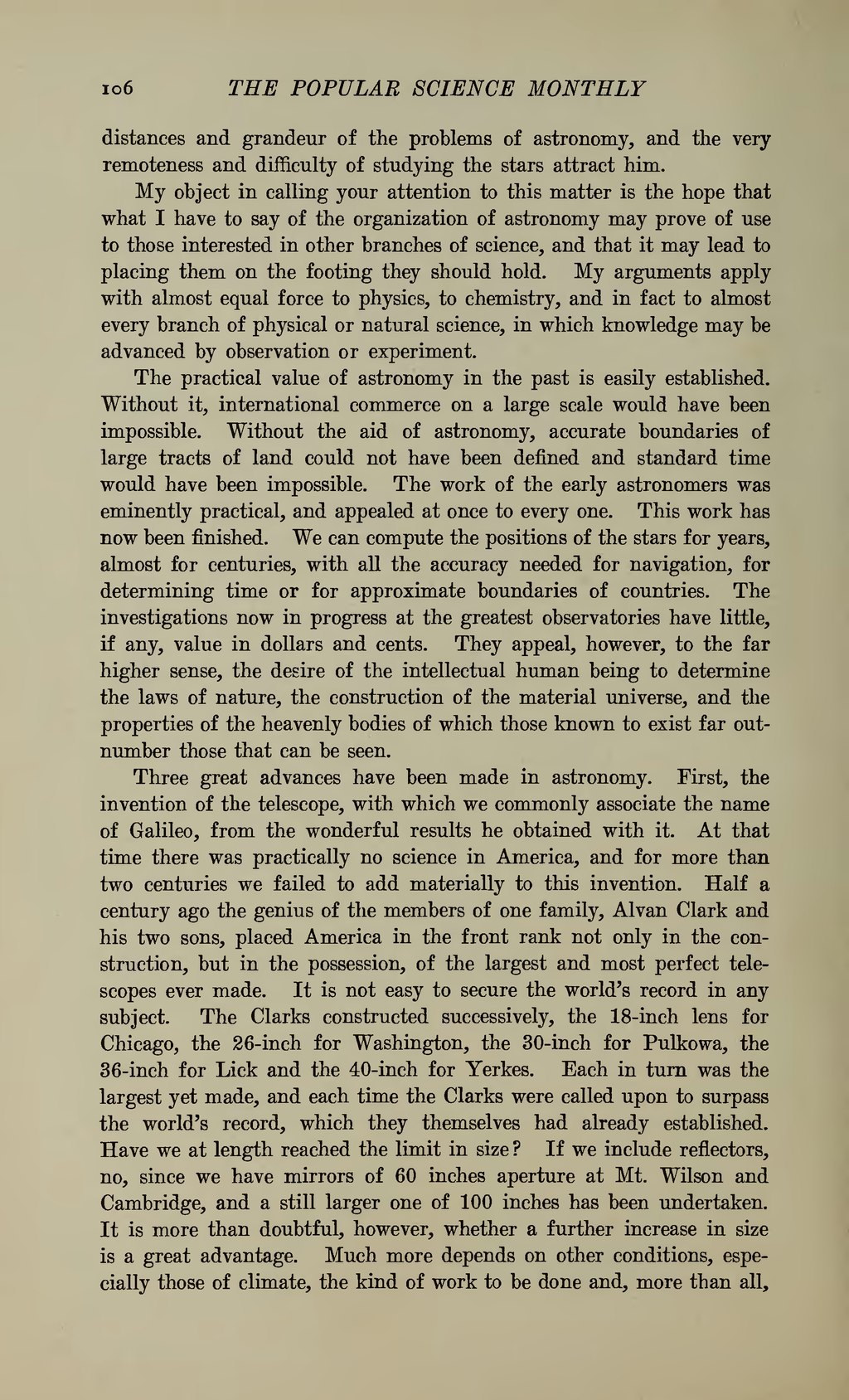distances and grandeur of the problems of astronomy, and the very remoteness and difficulty of studying the stars attract him.
My object in calling your attention to this matter is the hope that what I have to say of the organization of astronomy may prove of use to those interested in other branches of science, and that it may lead to placing them on the footing they should hold. My arguments apply with almost equal force to physics, to chemistry, and in fact to almost every branch of physical or natural science, in which knowledge may be advanced by observation or experiment.
The practical value of astronomy in the past is easily established. Without it, international commerce on a large scale would have been impossible. Without the aid of astronomy, accurate boundaries of large tracts of land could not have been defined and standard time would have been impossible. The work of the early astronomers was eminently practical, and appealed at once to every one. This work has now been finished. We can compute the positions of the stars for years, almost for centuries, with all the accuracy needed for navigation, for determining time or for approximate boundaries of countries. The investigations now in progress at the greatest observatories have little, if any, value in dollars and cents. They appeal, however, to the far higher sense, the desire of the intellectual human being to determine the laws of nature, the construction of the material universe, and the properties of the heavenly bodies of which those known to exist far outnumber those that can be seen.
Three great advances have been made in astronomy. First, the invention of the telescope, with which we commonly associate the name of Galileo, from the wonderful results he obtained with it. At that time there was practically no science in America, and for more than two centuries we failed to add materially to this invention. Half a century ago the genius of the members of one family, Alvan Clark and his two sons, placed America in the front rank not only in the construction, but in the possession, of the largest and most perfect telescopes ever made. It is not easy to secure the world's record in any subject. The Clarks constructed successively, the 18-inch lens for Chicago, the 26-inch for Washington, the 30-inch for Pulkowa, the 36-inch for Lick and the 40-inch for Yerkes. Each in turn was the largest yet made, and each time the Clarks were called upon to surpass the world's record, which they themselves had already established. Have we at length reached the limit in size? If we include reflectors, no, since we have mirrors of 60 inches aperture at Mt. Wilson and Cambridge, and a still larger one of 100 inches has been undertaken. It is more than doubtful, however, whether a further increase in size is a great advantage. Much more depends on other conditions, especially those of climate, the kind of work to be done and, more than all,
